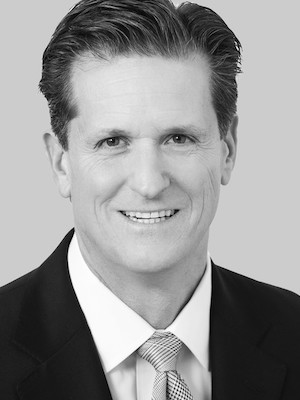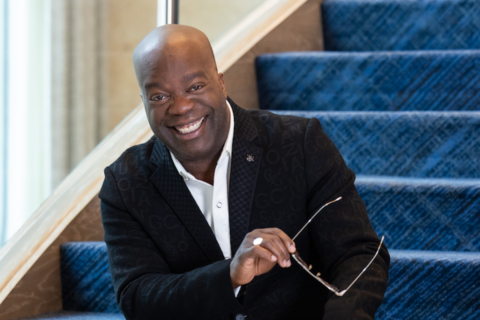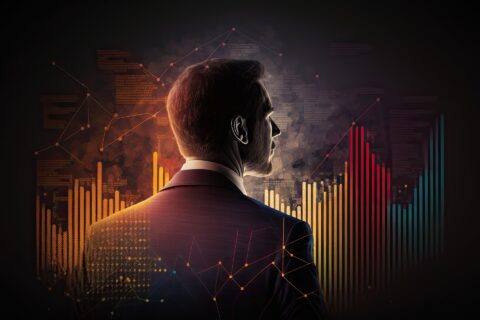Thriving in business means adapting to the many disruptions and influences that shape our modern work environment. Workplace trends expert Rick Grimaldi shares what’s in and what’s out in 2021.

The way we work is changing fast. Technology is disrupting every sector, while shifting social, political, and environmental factors are shaping a new landscape of work for leaders and employees. Workplace trends expert Rick Grimaldi says staying up to date on these changes is the key to navigating the chaos, staying successful, and, frankly, staying out of legal hot water.
“Some of the big trends we’re seeing are driven by COVID-19 and there are legal questions attached to many of them,” says Grimaldi, author of the new book FLEX: A Leader’s Guide to Staying Nimble and Mastering Transformative Change in the American Workplace. “But legalities are just the beginning. To stay relevant and attract a talented workforce you’ve got to know which outdated standards and behaviors no longer belong in today’s workplace. And you’ve got to change them quickly.”
In other words, to stay successful in a world in constant flux, leaders must know what’s in and what is decidedly out. Then they must transform their organization accordingly.
For instance:
In: A structured, laser-focus on workplace safety.
Out: A “things will be fine” approach to safety.
Once a discrete area that many thought only construction companies and chemical plants needed to worry about, the COVID-19 pandemic suddenly made workplace safety an issue for everyone—in every business regardless of industry.
In addition, workplace violence is on the rise. Today’s workers demand and expect that companies put their safety first and companies are stepping up. A laser focus on safety not only helps companies prevent disability and discrimination claims and avoid OSHA fines, it sets them up to recruit and retain top talent. For more on this subject, check out Grimaldi’s interview with Wharton on Sirius XM Radio.
In: Flexibility that allows for work-life integration.
Out: Rigid rules about when and how employees work.
Work from home policies are here to stay. Also, the 9-5 workday is being replaced with a more flexible schedule that (theoretically) allows better work-life integration. Yet true work-life integration requires time to enjoy life and de-stress, which is not always easy when the workday bleeds into evenings and weekends. There are no easy answers for employees or companies.
“Yes, work from home can improve employee productivity, creativity, and morale,” says Grimaldi. “On the other hand, there’s no substitute for face-to-face interactions, and we’re starting to see burnout from those who have been working from home for the past year and don’t know when to close their laptops for the night. Organizations must weigh the trade-offs between what’s good for the company and what’s good for the worker.”
In: Intentionally shaping multi-generational companies.
Out: Ageism in any form.
The most recent census revealed there are 38 million baby boomers, 57 million millennials (Gen Y), and 53 million Gen Xers. Soon, we will add in the 65 million Gen Zers. Youngsters far outnumber the oldsters at work. But at the same time, boomers are still hanging on to their place in the workforce. This is a good thing, says Grimaldi. The most productive and high-performing companies include a nice mix of employees of all age ranges, older employees included.
“A blend of different ages means you get more diverse perspectives and a synergy that gives you a competitive edge,” says Grimaldi. “Younger workers can come up with different ideas and may push for meaningful social and environmental change. But older employees bring a wealth of experience, insight, stability, and soft skills that younger people may not have developed yet.”
In: A zero-tolerance attitude toward sexual harassment.
Out: Apathy around sexual harassment issues. (Or worse, cover-ups.)
In the post-#MeToo era, powerful employers and employees are facing new scrutiny about their workplace behaviors and relationships. “Everyone should have the memo by now,” says Grimaldi. “There should be zero tolerance for sexual harassment in the workplace.”
In: Taking a stand on social and environmental issues.
Out: Myopic focus on profits and shareholder earnings.
In recent years, many organizations have come forward to support the Black Lives Matter movement, taken a stand on global human rights issues, or adopted a more environmentally conscious approach to business.
Not only is taking a stand on such issues the right thing to do, it’s what people want. According to one PR agency, more than 87 percent of consumers make purchases based on whether a company’s social beliefs align with their own. And 75 percent of millennials say they would take a pay cut to work for a socially and environmentally responsible company.
In: Psychological safety and connectedness.
Out: Workplace bullies running roughshod.
As AI disrupts and reshapes businesses, the work left to be performed by humans will be based on collaboration and communication. Employees must feel safe enough to build good trusting relationships that spur innovation. Anyone who dominates, demeans, belittles, or bullies others is interfering with this pursuit—and companies will no longer tolerate it.
Leaders: Create an atmosphere of psychological safety by encouraging candor, avoiding blame, and allowing people to deliver bad news without fear of your reaction. Spell out expectations of how coworkers should interact, implement mandatory training, and set up channels for reporting bullying. And thoroughly investigate all claims.
In: Diversity, inclusion…and METAClusion.
Out: Overlooking people of color, women, and LGBTQ, and disabled employees.
Consider a few facts:
- For the first time, beginning in 2019, the majority of American hires in their prime—ages 25-54—were people of color.
- Also, for the first time in 2019, women made up the majority of the college-educated workforce. And the 66 million working women today are expected to grow to 92 million by 2050.
- Though immigrants make up just 18 percent of the workforce over age 25 in the US today, they obtain 28 percent of high-quality patents. They’re also more likely to be recognized as Nobel laureates in physics, chemistry, medicine, and physiology.
“We know diversity and inclusion are important,” says Grimaldi. “But organizations that want to thrive go further: They work toward what DEI expert Tristan Higgins calls metaclusivity. In other words, they cultivate a true sense of belonging. Feeling that they belong is what gets people engaged and allows them to do their best work.”
In: Openly discussing mental health in the workplace.
Out: A hands-off approach to employee emotional well-being.
After years of staying out of personal lives, more companies are asking, “How are you doing, really?” Thanks to COVID, many employees have moved past stress and into trauma territory. Companies are realizing that their psychological well-being impacts engagement, productivity, and every aspect of culture.
“Do everything you can to promote employee wellbeing, both physical and mental,” says Grimaldi. “Design benefits, career tracks, and work arrangements with an eye toward meeting the needs of employees at different stages of life. And destigmatize mental health issues. It has to be okay to ask for help.”
“Your ability to flex is what will make your business successful in the future,” concludes Grimaldi. “Disrupt yourself now by letting go of what’s out and embracing the trends that make our modern work environment more productive, more inclusive, and more profitable.”
Rick Grimaldi is a workplace trends expert and the author of FLEX: A Leader’s Guide to Staying Nimble and Mastering Transformative Change in the American Workplace. Rick’s unique perspective comes from his diverse career in high-ranking public service positions, as a human resources and labor relations professional for an international hi-tech company, and presently in private practice as a partner with Fisher Phillips, LLP, one of America’s preeminent management side labor and employment law firms. Day to day, Rick works with companies to help them adapt to the ever-changing business environment, achieve their workplace goals, and become better employers. Rick is an internationally recognized writer and keynote speaker, and has been selected through a peer review process as one of The Best Lawyers in America© in three of the last four years.
© YFS Magazine. All Rights Reserved. Copying prohibited. All material is protected by U.S. and international copyright laws. Unauthorized reproduction or distribution of this material is prohibited. Sharing of this material under Attribution-NonCommercial-NoDerivatives 4.0 International terms, listed here, is permitted.









